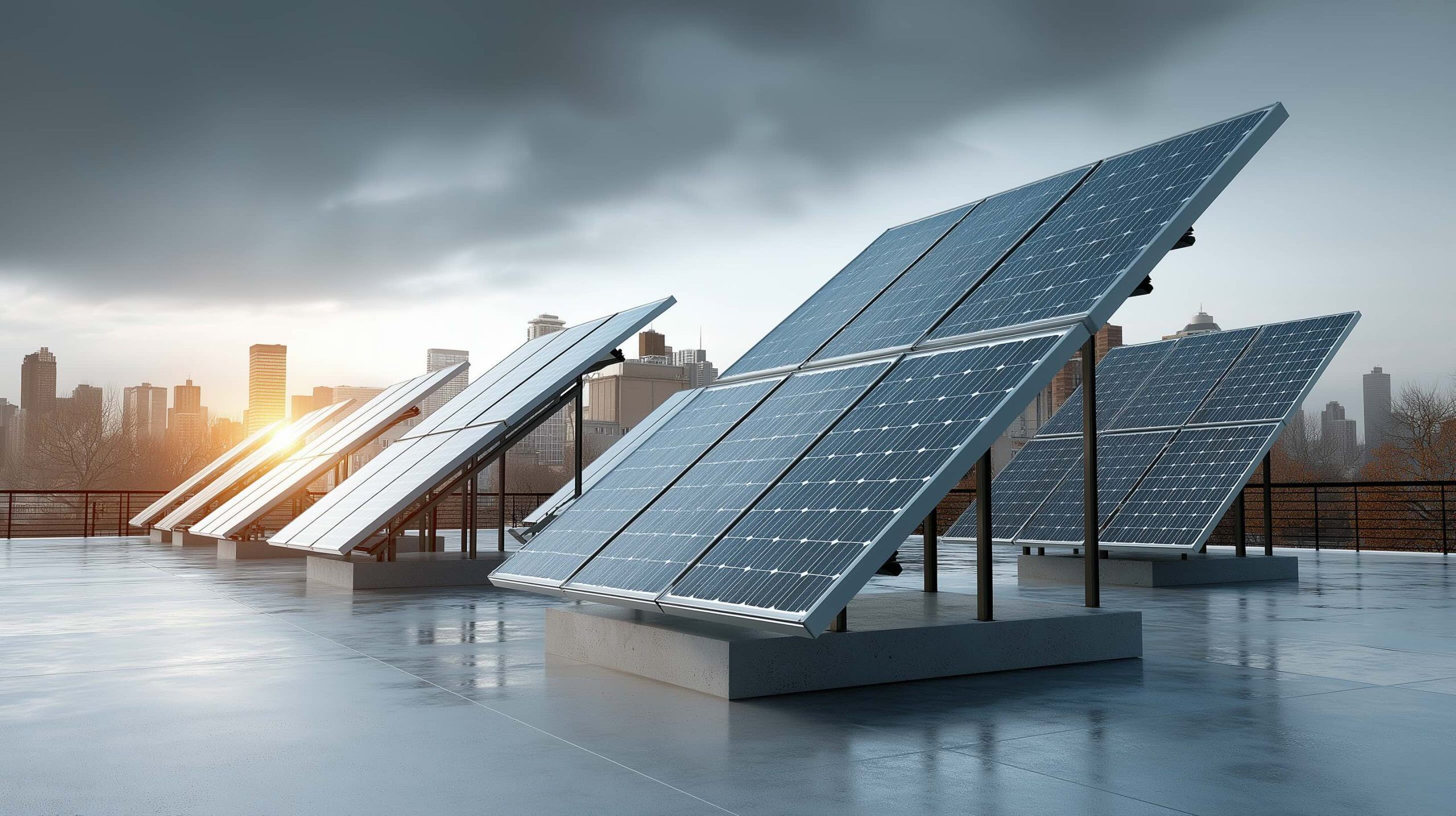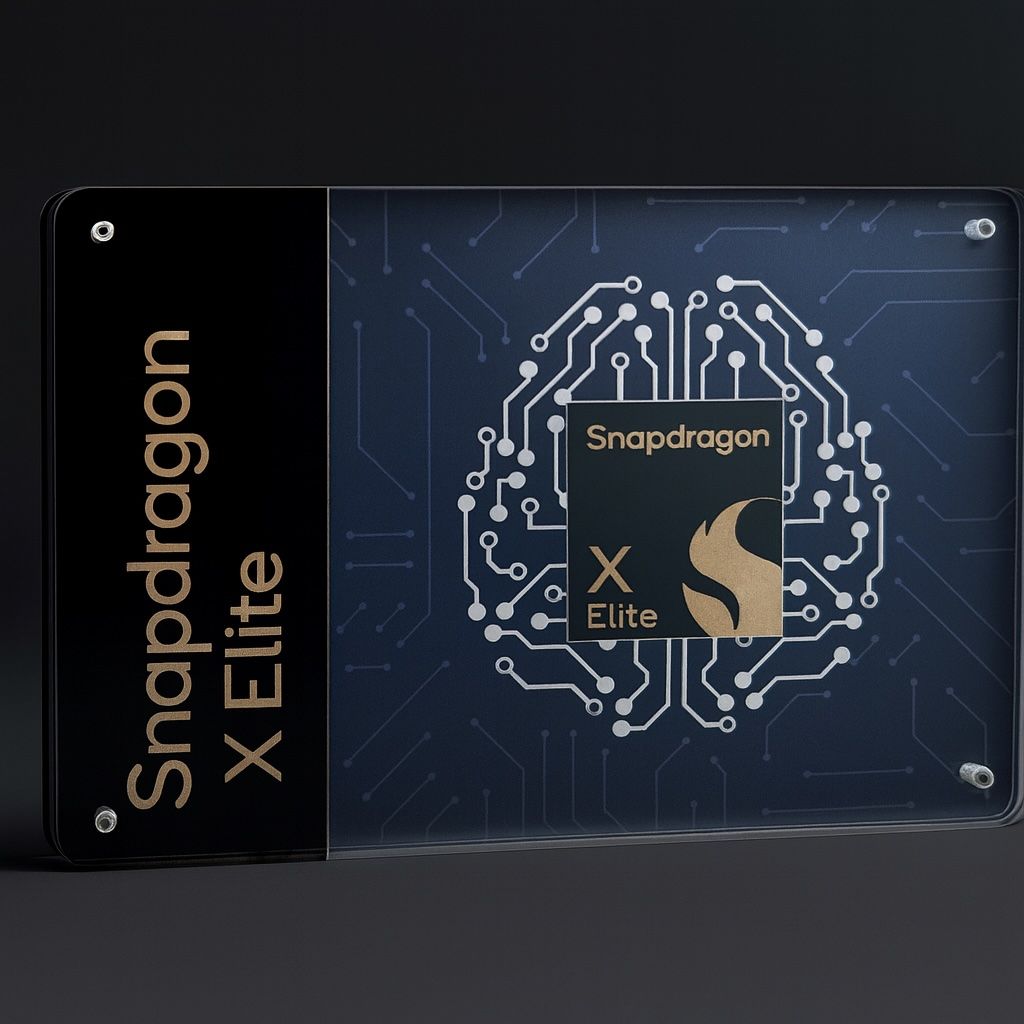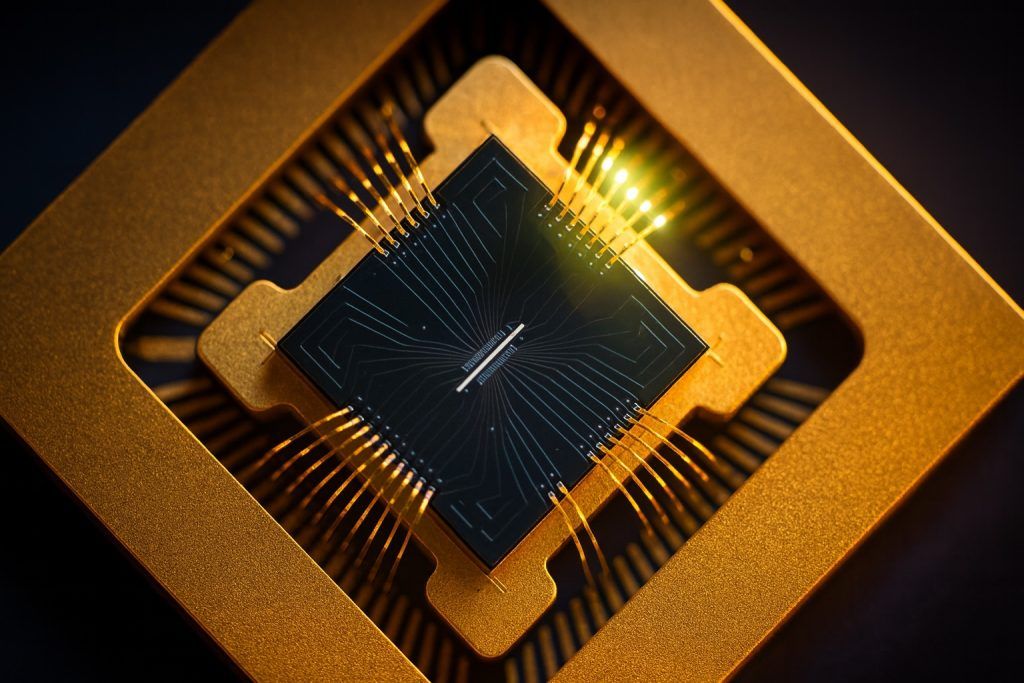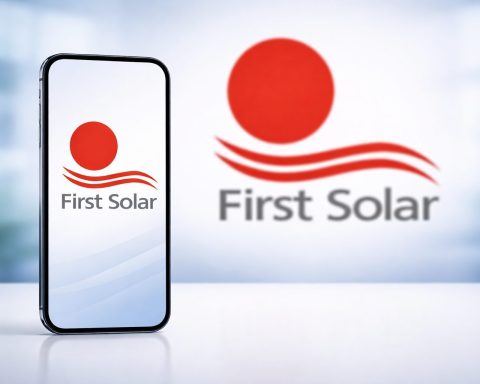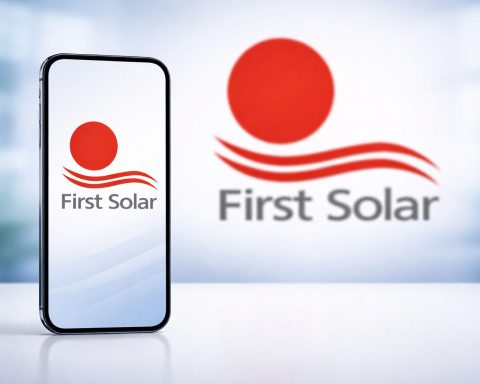- As of mid-2025, commercial N-type TOPCon cells reach about 23–24% efficiency, with best mass-produced TOPCon modules at 23.8% and JinkoSolar reporting 26.4% cell efficiency in tests.
- Heterojunction (HJT) solar cells regularly reach 25%+ efficiency in production, with Longi reporting a 27.3% lab cell efficiency.
- Perovskite–silicon tandem cells have surpassed 33% efficiency in labs (Longi 33.9%, KAUST 33.7%), and Oxford PV has a 72-cell tandem module at 24.5%.
- TOPCon modules typically retain about 87–90% of their power after 25–30 years, with a 3-year desert test showing just 0.14% degradation.
- HJT modules are generally stable, but a desert field study found HJT panels degraded up to 8.7% in 3 years due to encapsulant delamination.
- HJT bifaciality can reach up to about 95%, TOPCon typically 80–85% with some designs above 90%, and Trina Vertex N series TOPCon modules advertise up to 90% bifaciality.
- TOPCon costs have fallen to near PERC levels by 2024–2025, helping TOPCon capture roughly 80% of new cell production by 2025.
- HJT manufacturing costs are higher, estimated 1.3×–1.5× the cost of a TOPCon line, though new multi-gigawatt HJT plants are opening in China to reduce costs.
- Oxford PV conducted the first commercial sale of perovskite–silicon tandem modules in September 2024, delivering a 72-cell module at 24.5% and holding a 26.9% lab-record.
- Industry experts expect TOPCon to remain dominant through the mid-2020s, with meaningful tandem market share unlikely before 2030.
N-Type TOPCon vs HJT vs Perovskite-Silicon Tandem Comparison
Solar energy is experiencing a next-generation technology boom. Three advanced solar photovoltaic (PV) technologies – N-Type TOPCon, Heterojunction (HJT), and Perovskite-Silicon Tandems – are at the center of industry buzz. Each promises higher efficiency and lower degradation than yesterday’s standard p-type PERC panels, potentially delivering more power from the same sun. As manufacturers race to innovate, solar enthusiasts are asking: Which of these technologies will dominate, and what do their performance and market readiness look like?
In this comprehensive comparison, we break down the technical differences (from efficiency and temperature performance to longevity and bifacial power gains), current market availability (who’s making these panels and what they’re called), upcoming product launches for 2025, and the latest industry updates. Expert insights and quotes are included to provide a clear, public-friendly picture of the solar tech showdown shaping our renewable energy future.
Technical Comparison: Efficiency, Degradation & Performance
Efficiency and Power Output
N-Type TOPCon (Tunnel Oxide Passivated Contact) cells have quickly achieved high efficiencies in mass production. Commercial TOPCon solar cells reach about 23–24% efficiency in practice, with laboratory prototypes already exceeding 25% [1] [2]. In fact, the best mass-produced TOPCon modules as of mid-2025 boast efficiencies up to ~23.8% [3], and industry leaders like JinkoSolar have hit 26.4% cell efficiency in tests [4]. This closes in on the theoretical efficiency limit for silicon (~29%). TOPCon’s efficiency gains come largely from improved passivation contacts that boost voltage [5]. By late 2024, Trina Solar even unveiled a 760 W TOPCon panel at 24.5% efficiency – one of the highest for any silicon module [6].
Heterojunction (HJT) solar cells are known as the efficiency champions of commercial silicon PV. These cells, which sandwich a crystalline silicon wafer between ultra-thin amorphous silicon layers, regularly achieve 25%+ cell efficiency in production [7]. Several manufacturers have released HJT modules around 22–23% module efficiency, with record lab cells by companies like Longi reaching 27.3% [8]. HJT’s design offers very high voltage and excellent surface passivation, giving it a slight efficiency edge. However, in practice the maximum commercial efficiencies of HJT and TOPCon are very close, with HJT only holding a slight lead in recent quarters [9]. Both technologies are pushing the envelope – for instance, Aiko Solar’s back-contact TOPCon cells hit 24.2% module efficiency in 2024, and Longi’s hybrid HJT/back-contact cells (Hi-MO 9) reached 24.1% [10] [11].
Perovskite-Silicon Tandem cells offer the tantalizing prospect of leapfrogging silicon’s efficiency limits. In tandem architecture, a perovskite solar cell layer sits atop a silicon cell, capturing different parts of the solar spectrum. Lab researchers have rapidly pushed tandem cell efficiencies above 33% in the past two years – a Longi prototype hit 33.9% in late 2023, reaching performance levels once only seen in exotic space-grade cells [12]. Experts note these tandem efficiencies “are now in ranges that could previously only be achieved with III-V semiconductor cells” (like gallium arsenide) [13]. Such a tandem could theoretically enable module efficiencies around 30%, far above today’s norms [14]. However, real-world tandem modules are still in pilot stages. Oxford PV, a frontrunner, has produced a 72-cell tandem module at 24.5% efficiency and even demonstrated a small residential module at 26.9% [15] [16]. This is about 20% more power output than standard silicon panels, representing a huge boost in energy yield [17]. The promise is clear – tandems are the efficiency leaders on paper – but achieving those gains at scale is an ongoing challenge.
Degradation and Lifespan
A solar panel’s value isn’t just initial efficiency – it’s how well it maintains performance over decades. Here, the differences between technologies become apparent.
TOPCon (N-type) modules exhibit excellent durability with very low light-induced degradation. Because TOPCon uses n-type silicon wafers, it largely avoids the boron-oxygen defects that cause LID in conventional p-type cells [18] [19]. Manufacturers typically guarantee TOPCon panels will retain ~87–90% of their power after 25–30 years. For example, Trina’s latest TOPCon panel specifies only 1% power loss in the first year and 0.4% annually thereafter [20] – on par with the best industry warranties. In the field, TOPCon has performed impressively: a recent 3-year desert test found a TOPCon module degraded a mere 0.14% over three years (essentially negligible), the lowest of all modules tested [21]. Such stability stems from TOPCon’s robust passivation and contact design which also resists PID (potential-induced degradation).
HJT modules are marketed for exceptional stability. Their n-type base and amorphous silicon layers virtually eliminate LID and LeTID (light-and elevated-temperature-induced degradation). One analysis noted HJT panels degrade only about ~1% in the first year and ~0.35% per year afterward, delivering a long lifetime at high performance [22]. Indeed, HJT makers often give 30-year warranties with ~90% power retention. HJT’s bifacial glass-glass construction also enhances longevity by reducing moisture ingress and UV damage. That said, real-world results underscore the importance of build quality. The same desert field study surprisingly found HJT modules had the highest degradation (up to 8.7% power loss in 3 years) among new technologies [23]. This was well above the 0.25%/year rate implied by their datasheets [24] [25]. The cause was linked to material and design issues (one observed issue was encapsulant delamination in tested HJT panels [26] [27]). In short, HJT technology itself is inherently stable, but manufacturers must ensure high build quality to realize its full durability potential.
Perovskite Tandem technology faces the biggest questions on longevity. Degradation rate is the key hurdle for perovskite materials – they can be prone to rapid efficiency loss from moisture, heat, UV exposure, and other environmental stresses. Currently, no perovskite-silicon tandem maker can guarantee a 25-year lifespan yet [28] [29]. Initial field tests are underway: a 1 MW pilot plant in China’s desert has been running on perovskite-only modules (under 20% efficient) since late 2023, to gather data on real-world stability [30]. Researchers are actively improving durability with encapsulation and chemical tweaks – some lab cells have shown promise of sustaining >90% performance after accelerated aging tests. Experts are optimistic: “With progress made, 20-year stability could in principle be achieved today – provided available knowledge is bundled into manufacturing processes,” says Prof. Michael Saliba, a leading perovskite researcher [31]. Modeling by KAUST scientists suggests if tandems can limit degradation to ~0.4%/year (similar to silicon), even a ~24% efficient tandem would be economically viable [32]. In other words, stability is improving, but until real products prove themselves over years of operation, tandem panels will be cautiously deployed. Early commercial tandem modules from Oxford PV are being offered with a standard 25-year warranty, but widespread bankability will require more field data in the next few years.
Temperature Coefficient and Climate Performance
Solar cells perform worse when they get hot, so the temperature coefficient (power drop per °C rise) is crucial for sunny climates.
Both TOPCon and HJT excel with lower temperature coefficients than older technologies. HJT panels are industry standouts, with a coefficient around -0.24% to -0.26%/°C [33] [34]. This means for each 1°C rise above 25°C, an HJT panel loses only ~0.25% of its output, significantly less heat-induced loss than a typical PERC panel (~0.37%/°C). One manufacturer notes HJT’s “exceptional high-temperature performance” leads to minimal efficiency loss even in scorching conditions [35]. In fact, in that desert test, one HJT module showed the lowest heat-related performance loss (only ~5% drop) among various panels over summer, reflecting HJT’s advantage in hot climates [36] [37].
TOPCon modules also have an excellent temperature coefficient, commonly around -0.30% to -0.28%/°C. Trina’s new TOPCon Ultra panels, for example, are rated at -0.28%/°C [38]. Thanks to the n-type cell structure, TOPCon tolerates heat better than legacy panels, maintaining output in high irradiance environments [39] [40]. As Jinko’s VP Qian Jing explains, n-type cells simply “have a lower temperature coefficient, leading to better performance under high-temperature conditions” – a clear advantage in hot, sunny regions [41] [42].
Perovskite tandem cells can actually have positive attributes in heat – some perovskite materials’ bandgaps widen at higher temperature, partially offsetting typical voltage drops. However, the stability of perovskites at high temperature is a concern (prolonged heat can accelerate degradation). So while the immediate temperature coefficient of a tandem might be on par with silicon (or even slightly better in certain ranges), ensuring the tandem layer survives decades of thermal cycling is the bigger challenge. At this stage, any slight performance edge under heat is secondary to the overarching stability issue for perovskite tech [43] [44]. On paper, tandems operating at lower cell temperatures (due to splitting the solar spectrum) could even run cooler and more efficiently. But until durability under sustained high temps is proven, TOPCon and HJT are safer bets for desert deployments.
Bifaciality – Dual-Sided Power Gains
All three technologies can be made bifacial, capturing sunlight from both front and back sides to boost energy yield (especially on reflective surfaces like snow, sand, or white rooftops). HJT naturally lends itself to high bifaciality. With a transparent conductive oxide and dual-glass module design, HJT panels achieve bifaciality up to ~95% (meaning the back side produces almost as much power as the front) [45]. Many HJT products advertise >90% bifacial factors. For example, China’s Huasun Energy – now the world’s largest HJT manufacturer – offers HJT modules with 90–100% bifaciality [46] [47]. This yields significantly more total energy per panel in the right conditions. HJT’s symmetrical cell structure and transparent back also contribute to its strong bifacial performance.
TOPCon modules are not far behind. TOPCon cells typically have a bifacial design (metal contacts can be applied on both sides), and bifaciality of ~80–85% is common [48] [49]. Some advanced TOPCon modules have reached ~90% with selective rear passivation techniques [50]. In fact, new “TOPCon 2.0” cells with back-contact optimization can push bifacial factors above 90%, essentially matching HJT’s bifacial performance [51]. As an example, Trina’s Vertex N series (n-type TOPCon) advertises up to 90% bifaciality [52]. Higher bifacial gains mean better output in ground-mount solar farms with light-colored soil or reflective surfaces, and TOPCon panels are taking advantage of this to narrow any gap with HJT in energy yield.
Perovskite tandems can also be bifacial in principle, but current designs are mostly focused on maximizing front-side efficiency. A tandem module could be made bifacial by using a transparent back layer and a perovskite top cell that also absorbs light from the rear. This is largely experimental at this stage. One complication is that the perovskite top cell might need a transparent electrode on the back side to let rear light through to the silicon bottom cell. Research is ongoing into bifacial tandems, but as of 2025 virtually all prototype tandem modules (like Oxford PV’s) are monofacial. It’s likely that in the future, tandem modules will incorporate bifacial designs – combining perovskite’s high front efficiency with bifacial gains from the silicon bottom cell. For now, TOPCon and HJT bifacial panels dominate dual-sided solar applications, with HJT holding a slight edge in maximum bifaciality, especially in specialized products (Huasun even markets a vertical bifacial HJT module with ~100% bifaciality for agrivoltaics) [53].
Manufacturing Complexity and Cost Trends
When it comes to making these high-tech panels, manufacturing complexity translates to cost – and this is where their fortunes diverge.
TOPCon is often praised for its relative ease of adoption. It builds on the well-established PERC production lines with only a few added steps (an ultra-thin oxide layer and a doped polysilicon layer on the cell). This means many PERC factories can be upgraded to n-type TOPCon with moderate investment, leveraging existing equipment [54] [55]. The process is a bit more complex than PERC, but not a complete overhaul. The benefit is low incremental cost: TOPCon cells have rapidly reached cost parity with PERC. In fact, the low manufacturing cost of TOPCon has been key to its dominance – it delivers high efficiency without a big price premium [56] [57]. As of 2024, TOPCon modules that once cost more are now only slightly above PERC costs, if not equal. “What was once a premium option is now increasingly competitive in cost,” notes Alessandro Barin, CEO of FuturaSun, crediting TOPCon’s cost reductions for driving broad adoption [58]. Analysts from CRU Group observe that TOPCon’s economics are so strong, it seized about 80% of new cell production by 2025, quickly overtaking p-PERC as the mainstream technology [59] [60]. In short, TOPCon hits the sweet spot of higher performance at near-parity cost with conventional silicon, a major reason it’s become the workhorse of the current solar expansion.
HJT, by contrast, has a more complex production process that historically made it pricier. Manufacturing Heterojunction cells requires new equipment and know-how: thin-film deposition machines to apply the amorphous silicon layers, stringent cleaning to keep interfaces defect-free, and typically high silver consumption for metallization (multiple busbars or a mesh of ultra-thin wires to collect current). The up-front factory cost for HJT is substantial – often estimated 1.3× to 1.5× that of a TOPCon line for the same capacity. This has been a barrier to wide adoption. “The two technologies offer similar efficiency, but do not compete on manufacturing cost,” notes a PV analyst, adding that HJT has struggled to gain market share from TOPCon due to its higher cost per watt [61] [62]. One analysis suggests HJT would need to sustain an ~2.5% absolute efficiency lead over TOPCon to offset its cost disadvantage, which is not likely in the near term [63]. However, cost trends for HJT are improving. Companies are tackling the cost issue by reducing silver usage (through innovative screen-printing and even copper electroplating techniques) [64] [65], and by scaling up production to achieve economies of scale. Many new HJT factories are opening in China with multi-gigawatt capacities, which should drive down unit costs. There is optimism that with mass production and metallization breakthroughs, HJT’s cost could approach TOPCon’s within a couple of years. Until then, HJT remains somewhat niche – a high-efficiency, high-cost product mostly for premium markets – whereas TOPCon is becoming the mass-market standard due to its cost-effectiveness [66].
Perovskite tandem manufacturing is, in some ways, the most complex – but also offers potential for low-cost scaling in the long run. Producing tandem cells requires integrating two different technologies: the silicon bottom cell (often a TOPCon or HJT itself) and the perovskite top cell. Perovskite cells can be made with solution processing (like ink coating or printing) which is potentially very cheap and fast over large areas, a big advantage. In fact, several Chinese startups (e.g. Microquanta, Utmolight) are already operating pilot lines using wet coating techniques to make pure perovskite panels at low cost (albeit with modest <20% efficiencies) [67] [68]. The challenge is layer uniformity and yield when combining with silicon. Every tandem cell has to be nearly defect-free across both layers to perform and last. This raises manufacturing complexity significantly. Yield losses in early tandem lines could make costs high initially. Oxford PV’s pilot line (100 MW capacity in Germany) effectively has to merge a perovskite cell onto finished silicon heterojunction cells – a sophisticated process still being refined [69]. Early tandem modules will likely carry a cost premium due to these challenges and lower yields. However, the long-term vision is compelling: perovskite layers use common materials and low temperatures, so they could be inexpensive to add once the processes are perfected. Cost trends are expected to improve as techniques mature; one study suggests tandems can tolerate about a 30% higher cost than single junction and still compete, due to their higher efficiency [70]. If stability issues are solved, tandem tech could actually lower solar electricity costs by generating more power per panel (thus fewer panels, racks, and land needed for the same output). The industry optimism is evident – Oxford PV claims its 24.5% tandem modules will deliver 20% lower levelized cost of energy compared to standard panels, thanks to the efficiency boost [71] [72]. For now, tandem manufacturing is just entering pilot scale, and significant cost reductions are anticipated as production scales to the gigawatt level around 2026–2027 [73].
Bottom line: TOPCon is a straightforward evolutionary tech with low added cost, HJT is a high-performance tech still overcoming cost hurdles, and perovskite tandems are a revolutionary tech in early days – high complexity now, but potentially game-changing efficiency and cost in the future if hurdles are cleared.
Market Availability and Key Players
Despite their advanced nature, these technologies are already on the market to varying degrees. Here’s a look at who is making what, and under which product names you might encounter these panels in 2025:
N-Type TOPCon: Manufacturers and Products
N-Type TOPCon has quickly gone mainstream. Nearly every major panel manufacturer is now producing or launching n-type TOPCon modules. In fact, n-type technologies (mostly TOPCon) surpassed p-type in market share in 2024, as p-PERC cells “quickly exited the stage” in new production [74] [75].
- JinkoSolar – A pioneer of TOPCon, Jinko commercialized its n-type panels early. Their flagship Tiger Neo series uses TOPCon cells, boasting module efficiencies ~22-23% and excellent low-light and temperature performance. Jinko’s roadmap (per VP Qian Jing) aims for ~27% cell efficiency by 2025 [76] [77], and indeed Jinko set a world record 26.4% cell in 2022 [78]. They also announced a tandem cell (TOPCon+perovskite) hitting 33% in the lab [79], showing leadership in both TOPCon and tandem R&D.
- Trina Solar – Trina’s Vertex N series is its TOPCon line, including utility-scale panels up to 700+ W. In late 2024 Trina launched the Vertex N “i-TOPCon Ultra” module at 760 W (210mm cells), one of the most powerful panels commercially, with 24.5% efficiency and 90% bifaciality [80] [81]. Trina plans mass production of this series by Q2 2025 (10 GW capacity) [82] [83]. For residential and C&I, Trina offers Vertex S+ N-type panels (high-efficiency, glass-glass format for longevity) [84] [85].
- JA Solar – JA introduced DeepBlue 4.0 and now DeepBlue 5.0 series panels, which are n-type TOPCon products. The DeepBlue 4.0 Pro (launched ~2022) was one of the first TOPCon modules, and the newer DeepBlue 5.0 improves efficiency further (JA claims its innovations in optical absorption and cell design cut LCOE noticeably) [86]. JA’s TOPCon modules often come in 72-cell 182mm formats pushing 600–625 W for utility-scale, and 54-cell versions ~400–450 W for rooftop, with bifacial options available [87] [88]. JA reports about ~3-4% higher energy yield for its n-type vs p-type in field tests [89].
- LONGi Solar – LONGi, the world’s largest wafer producer, took a slightly different path focusing on back-contact cells, but it also embraced n-type. LONGi’s Hi-MO 7 and Hi-MO 9 series use n-type technology. Notably, LONGi’s Hi-MO 9 uses an HPBC (Hybrid Passivated Back Contact) cell, which is an n-type back-contact architecture rather than TOPCon, but it’s in the same high-efficiency class. Hi-MO 9 modules hit 24.1% efficiency at 650 W [90] [91], with a bifacial design (~75% bifaciality) [92]. LONGi touts ~1.5% absolute efficiency gain of its back-contact tech over conventional TOPCon [93] [94]. While not pure TOPCon, LONGi’s strategy underlines the industry trend: leveraging n-type wafers and advanced cell structures for higher performance. (LONGi is also active in HJT research – they set a 27.8% HJT cell record [95] – but their main products remain TOPCon/HPBC hybrids for now.)
- Other TOPCon players: Virtually all Tier-1 Chinese manufacturers have TOPCon offerings by 2025. Canadian Solar rolled out Series 7 TOPCon bifacial modules for utility projects (under the “HiKu7” line) with >21-22% efficiency. JA Solar, Astronergy, Risen Energy, Talesun, etc. all expanded TOPCon capacity. Even emerging players in India and Europe plan TOPCon lines given its now-proven track. With high volume and competition, TOPCon panel prices have fallen close to PERC levels in 2024–2025, making them an easy choice for new solar farms.
Heterojunction (HJT): Manufacturers and Products
Heterojunction technology, while extremely promising, has a more limited but growing set of manufacturers. As of 2025, HJT commands a smaller slice of the market, but several companies are pushing it forward:
- Huasun Energy – A Chinese manufacturer that has quickly become the world’s largest HJT producer [96] [97]. Huasun’s HJT panels (marketed under the Huasun “Himalaya” series and new Kunlun/Everest series) are on the cutting edge. In 2023, Huasun’s G12 (210mm) HJT modules hit 715 W and ~23.2% efficiency, the first to break the 700 W mark [98] [99]. These modules feature 132 half-cut cells and achieved ~90% bifaciality [100] [101]. By 2024, Huasun improved that to 720 W and 23.18% efficiency [102]. They use a double-glass design and offer 15-year product/30-year performance warranties, indicating confidence in longevity [103]. Huasun shipped over 11 GW of HJT panels globally by early 2025 [104], which shows how rapidly their capacity grew. At Intersolar Europe 2025, Huasun is unveiling two next-gen HJT innovations aimed at pushing efficiency beyond conventional limits and expanding use-cases (including a nearly 100% bifacial vertical panel for maximizing morning/afternoon yield, and semi-transparent HJT for agrivoltaics) [105] [106]. Huasun’s aggressive R&D and scaling make it a flag-bearer for HJT tech.
- REC Group – REC (a European-founded, now India-owned company) was an early adopter of HJT. Their REC Alpha and Alpha Pure series for residential/commercial markets use HJT cells with a proprietary “SmartWire” metallization (many thin wires instead of flat busbars). The REC Alpha Pure-R, for instance, offers around 21.9–22.3% efficiency at 410 W in a 60-cell format, one of the most efficient rooftop panels in 2022–2023 [107]. REC’s panels boast very low temperature coefficient (~-0.26%/°C) and an industry-leading warranty (92% retained after 25 years). REC partnered with Meyer Burger’s equipment to manufacture these and was among the first to mass-produce HJT at scale (Singapore factory ~600 MW). As REC moves under Reliance Industries’ wing, it’s expected to expand HJT manufacturing in India too.
- Meyer Burger – A Swiss-German firm, historically an equipment supplier, that transformed into a module manufacturer focusing on European-made HJT solar panels. Meyer Burger’s HJT modules (manufactured in Germany) target premium markets with all-black designs and high performance (efficiencies ~21-22% for 60-cell panels). They started with ~400 MW capacity and are expanding. Meyer Burger emphasizes a 40-year warranty option on some products – showing confidence in HJT’s stability. However, the company has faced challenges scaling up (even briefly operating a line in the US that was later paused). Still, Meyer Burger’s commitment underscores Europe’s interest in HJT tech for energy security and high-end installations.
- Maxeon Solar Technologies – While Maxeon (the SunPower spin-off) is known for its IBC cells, it has signaled interest in HJT for future generations. Its latest Maxeon 7 panels (24% efficient, IBC) do not use HJT, but Maxeon has R&D into hybrid HJT/IBC cells. In 2024 they achieved a lab cell above 26% combining these approaches. A “Maxeon 8” or similar in coming years could potentially use HJT layers to boost efficiency further, though no commercial HJT product from Maxeon is out yet.
- Other HJT players: Hevel (Russia) has been producing HJT modules for years (having converted from thin-film lines) – mainly for domestic and European markets, with panel efficiencies ~22% and notable bifacial gains. Tongwei Solar (China’s giant cell maker) has piloted HJT lines and is reportedly building multi-GW HJT capacity, indicating that more big players are preparing to jump in if costs improve. Risen Energy launched a 500 W HJT module (“Hyper-ion” series) in 2022 using HJT with some novel features (like solder-free contacts) and they continue to invest in HJT. Enel in Italy has a 3Sun factory ramping HJT cell production to 3 GW by 2024 as part of Europe’s PV manufacturing revival. This all suggests a robust ecosystem forming: at least 8–10 companies globally were shipping HJT modules by 2024 [108], and more lines are under construction. HJT is especially popular in scenarios where space is limited or maximum performance is needed – luxury residential, high-end commercial, or to hit record efficiencies in large-scale projects despite a bit higher cost.
Perovskite-Silicon Tandems: Early Market Entrants
Perovskite tandem panels are just entering the commercial arena. 2024 marked the first-ever sales of tandem PV modules, a major milestone for this next-gen tech.
- Oxford PV (UK/Germany) – Oxford PV is the clear leader in tandem commercialization. In September 2024, they announced the world’s first commercial sale of perovskite-silicon tandem modules, supplying an undisclosed US utility-scale project [109] [110]. Oxford PV’s product is a 72-cell glass-glass module using their perovskite-on-silicon cells, with an impressive 24.5% module efficiency [111]. The company claims these panels produce ~20% more energy than standard silicon panels due to the tandem design [112] [113]. CEO David Ward hailed it as “a breakthrough for the energy industry,” signaling that high-efficiency tandem technology is no longer just confined to labs [114] [115]. Oxford PV operates a 100 MW pilot production line in Brandenburg, Germany, and plans to scale to a GW-scale factory by 2026–27 [116]. They also hold a record 26.9% efficiency for a tandem module (achieved on a smaller prototype), and assert that world-record lab efficiencies will translate to mass-produced panels within a couple of years [117]. Oxford’s initial commercial modules are likely targeting premium applications (the first ones are going to a utility project, but they are also eyeing residential markets with a 60-cell version). Availability will initially be limited, but this marks the start of tandem panels being an option for buyers.
- Microquanta (China) – Microquanta Semiconductor is a Chinese startup that, rather than tandems, focused on pure perovskite PV first. In late 2023, Microquanta began series production of perovskite-only modules (~1.2m by 0.6m in size). These modules have efficiencies below 20% [118], which is lower than silicon, but they are being used to demonstrate low-cost manufacturing and gather field performance data (notably, a 1 MW installation in Inner Mongolia running since Nov 2023) [119] [120]. Microquanta’s work is significant as it proves perovskite solar tech can be scaled to megawatt levels and installed outdoors. The lessons from these deployments will inform tandem developments. Microquanta and others could later integrate such perovskite layers with silicon – effectively moving to tandem – once stability is sufficient.
- Others & Future Entrants: A number of companies worldwide are in the R&D or pilot phase for tandem modules. GCL (a major Chinese silicon supplier) announced a 1×2 m^2 perovskite module at ~18% efficiency and is preparing a 2 GW line in Suzhou for hybrid perovskite products [121] [122]. Utmolight (China) and Mellow Energy are planning 100 MW+ pilot lines by 2024–2025 to produce perovskite or tandem modules, targeting ~20–23% module efficiency with optimized processes [123] [124]. In Europe, Meyer Burger has a partnership with Oxford PV and is expected to incorporate tandem cell production in the future, potentially leveraging its heterojunction cell as the bottom layer [125] [126]. Many of the big silicon players (Longi, Jinko, JA) have internal tandem R&D – for instance, JinkoSolar announced a 33.2% efficient perovskite-TOPCon tandem cell in 2024 [127], and Longi collaborates with research institutes on tandem records. First commercial tandem panels available to consumers or installers will likely be in limited quantities through 2025 (e.g. Oxford PV’s modules for specific projects). By 2026, we expect more entrants: analysts forecast around 2 GW of tandem capacity globally by 2026 [128]. While that’s tiny in the context of the >300 GW annual solar market, it’s the beginning of scaling up. Enthusiasts and early adopters might start seeing tandem panels in niche deployments (demonstration projects, specialty high-end installations) as the tech proves itself. If progress continues, by the late 2020s we could see tandems move from pilot to mainstream – but for now, availability is nascent and mostly via pilot projects or special orders.
Innovations and Upcoming Developments (as of 2025)
The solar industry never stands still – new product launches and breakthroughs are fast and furious. Here are some notable innovations and upcoming developments in each category as we head through 2025:
- TOPCon 2.0 Era: Manufacturers speak of entering a “TOPCon 2.0” era with even better performance. Trina Solar’s 760 W module (launching mass production in 2025) is a prime example, achieving 24.5% efficiency and advanced features like high bifaciality and a low temp coefficient [129]. Trina’s R&D roadmap aims for >26% efficient TOPCon cells by 2027, and indeed they recently hit 26.58% in a large-area TOPCon cell confirmed by ISFH CalTeC in Germany [130] [131]. Laser Enhanced Contact Optimization (LECO) is one tech being adopted to boost TOPCon cell efficiency by another 0.3–0.6% through better metallization contacts [132] [133]. We also see TOPCon-back-contact hybrids (TBC) emerging – combining TOPCon passivation with a back-contact cell design. These have demonstrated ~1.5% absolute efficiency higher than standard TOPCon in prototypes [134] [135]. Companies like LONGi are championing back-contact (HPBC) as a successor, already shipping 17 GW of back-contact modules in 2024 with plans to integrate HJT in the future [136] [137]. This could be a next leap: perhaps by 2030, TOPCon combined with back-contact might become the new mainstream, offering >25% typical module efficiencies [138] [139]. In the shorter term, expect TOPCon panels to continue increasing wattage (larger formats with M10/M12 wafers, 700–800 W utility modules) and incremental efficiency gains. Also notable is cost innovation: some TOPCon makers are exploring copper metallization (to replace silver) and even n-type multi junction concepts (tandem with other materials) to keep pushing performance without raising cost [140] [141].
- HJT Cost Reduction and Hybrids: A big focus in HJT development is reducing manufacturing costs so that its high efficiency can shine in the mass market. In 2024, several equipment and materials advancements have been reported: new silver-free or reduced-silver pastes for HJT, multi-busbar and wire interconnection to cut resistive losses without using so much silver, and lower-temperature processing to use cheaper metallization. Researchers at Fraunhofer ISE achieved HJT cells with 25.8% efficiency using 2/3 less silver by incorporating copper in the screen-printed contacts [142] [143] – a sign that viable silver reduction is coming. Plating techniques (electroplating copper onto HJT cells) are also showing success in lab trials, with aging tests indicating good stability for plated contacts [144] [145]. These innovations, if implemented, could significantly cut HJT production costs in the next 1-2 years. On the product side, next-gen HJT modules are being tailored for new applications: Huasun’s upcoming Kunlun series optimized for vertical bifacial use (to capture morning/evening sun) and Everest series with rectangular cells for better packing efficiency, are examples of HJT pushing into specialized markets with creative designs [146] [147]. Longi, as mentioned, is working on combining HJT with back-contact (essentially putting HJT cells into an interdigitated back contact format) which in theory could yield efficiencies >25-26% in production. This “HBC” hybrid cell (HJT + BC) could be a game-changer, and Longi already hit 27.3% in a lab HJT-BC cell [148]. By later in the decade, we may see such hybrids in commercial panels if they can industrialize it. In the immediate term, expect more HJT capacity announcements – many Chinese manufacturers have signaled multi-gigawatt HJT factory plans for 2025-2026, often aiming at domestic and European high-end demand. The technology is at a tipping point: if these cost-saving measures bear fruit, HJT could “break out” and start closing the price gap with TOPCon. If not, HJT might remain a smaller (but important) segment catering to those who value top efficiency and bifacial gains.
- Perovskite Tandem Progress: 2023–2025 is an inflection period for tandem technology moving from lab to fab. Record-setting efficiencies continue to roll in – in late 2023 and early 2024, we saw tandem cell records: 33.7% (KAUST), 33.9% (Longi), and Oxford PV achieved 28.6% on a larger-area tandem cell (~handsized) [149] [150]. The fact that these records keep being broken in months shows how fast the field is advancing. More importantly, scale-up efforts are accelerating. Oxford PV’s first shipments in 2024 will likely be followed by more pilot installations in 2025 (they plan to supply additional utility customers and even some pilot residential systems from their 100 MW line) [151] [152]. By 2025’s end, Oxford PV aims to ramp that line and prepare for its gigawatt factory. In China, companies like LONGi and Jinko might integrate pilot tandem lines within existing cell fabs – there are rumors that some big manufacturers will dedicate R&D lines to perovskite-silicon production by 2025, aiming for an early mover advantage if the tech becomes viable. Also noteworthy are government and academic initiatives: the EU, for instance, has funded tandem research (as part of its Horizon programs) to boost home-grown solar tech. In the US, startups like Tandem PV and Swift Solar (focused on perovskites) are partnering with universities to tackle durability and scale manufacturing. On the innovation front, a lot is happening to solve tandem challenges. New perovskite compositions and additives have greatly improved stability (e.g. triple-halide mixes, 2D/3D perovskite layers to self-heal defects). Encapsulation methods – using robust barrier films and UV filters – aim to give perovskite cells silicon-like lifetimes. Tandem architectures are also diversifying: some are exploring 4-terminal tandems (separate outputs from perovskite and silicon cells) which are easier to implement, versus the current 2-terminal approach (monolithic tandem). Each approach has trade-offs, but multiple pathways are being tested to see which yields a reliable, efficient product fastest. As expert Joris Libal of ISC Konstanz noted, tandem modules will not gain significant market share before 2030 due to the reliability issues that still need solving [153] [154]. But every year up to 2030 will likely bring incremental improvements and small deployments that pave the way. By late 2025, we anticipate announcements of slightly larger tandem installations (perhaps 5–10 MW pilot plants), first-generation bifacial tandem prototypes, and continuous efficiency upticks. The excitement around perovskites is summed up by FuturaSun’s CEO: “Their high-efficiency potential, tunable bandgap, and tandem compatibility make perovskites one of the most promising candidates for next-gen photovoltaics. Research has rapidly advanced toward improving stability and scalability, bringing commercial viability closer than ever,” says Alessandro Barin [155]. In other words, stay tuned – tandem tech in 2025 is where silicon tech was perhaps in the early 2000s: poised for big leaps, but still needing that proven robustness.
Latest Industry News and Trends (2024–2025)
The solar industry in 2024-2025 is dynamic, with rapid shifts to new technologies and noteworthy trends that provide context to these tech comparisons:
- N-Type Overtakes P-Type: A major industry milestone was reached as n-type cells (TOPCon, HJT, etc.) surpassed p-type PERC in market share for the first time in 2024 [156] [157]. This marks a “Solar 2.0” transition as manufacturers pivot to newer tech. PERC, the workhorse of the 2010s, is being phased out more quickly than expected – by 2025, many new factories are almost exclusively n-type. This transition happened in record time: TOPCon went from around 20% of production in 2023 to ~80% by 2025 [158] [159]. Such a rapid uptake shows that when a new PV tech offers better performance at similar cost, the industry wastes no time.
- Module Oversupply and Price War: Interestingly, these technology gains are unfolding during a period of module oversupply and intense price competition. From 2022 to 2024, solar manufacturing capacity (especially in China) overshot demand significantly, leading to inventory build-ups [160] [161]. By 2024, module prices plunged, squeezing manufacturer margins. This forced companies to differentiate through technology – pushing higher efficiency panels to win customers even as prices per Watt fell. It also led to some cost-cutting and quality concerns, but fortunately innovation didn’t stall. PV Magazine reported that despite the glut, module efficiency kept climbing – between early 2023 and mid-2025, the best commercial TOPCon modules jumped from 22.8% to 24.1% efficiency [162]. In other words, innovation continued non-stop in an oversupplied market because manufacturers hoped better tech would give them an edge or open new markets. Now, in 2025, there are signs that major Chinese producers are coordinating to scale back output to restore balance [163], potentially stabilizing prices by 2026. For consumers and project developers, the upside of this period has been record-low prices for high-end panels – TOPCon modules that might have been a premium product are now very affordable, accelerating their adoption.
- Efficiency Records and Achievements: The past year saw frequent headlines about new efficiency records:
- “JinkoSolar achieves 26.4% efficiency for n-type TOPCon cell” [164] – a world record for silicon cells that Jinko set (and matches the best heterojunction cells).
- “Longi hits 27.3% with HJT cell” [165] – breaking the heterojunction record.
- “Perovskite-silicon tandem surpasses 33%” [166] – a feat by research groups and companies like Longi and Jinko in the tandem realm.
- “Trina’s large-area TOPCon cell at 26.5%, 740 W module prototype” – Trina announced a 26.58% cell confirmed by ISFH and a 740.6 W module result verified by TÜV [167] [168].
- “Maxeon launches 24% efficient IBC Maxeon 7 panel with 40-year warranty” [169] [170] – while not TOPCon/HJT, this shows even legacy high-end tech (back-contact IBC) raising the bar.
Each of these records and product launches edges solar closer to the theoretical limits and keeps the competition hot. For the consumer or investor reading the news, it can be dizzying – but the clear takeaway is that solar technology in 2025 is the most efficient and reliable it’s ever been, and still improving.
- Real-World Reliability Studies: Alongside lab progress, there’s been attention on how these new technologies perform in real outdoor conditions. The 3-year desert field test in Qatar (published in 2025) was eye-opening [171] [172]. It pitted PERC, TOPCon, and HJT modules in harsh desert sun and tracked performance. Key findings:
- TOPCon had the lowest degradation overall, reinforcing its durability claims [173].
- One HJT model had unexpectedly high power loss due to encapsulation issues (a cautionary tale that new tech must be rigorously engineered for tough climates) [174].
- All advanced modules (TOPCon, HJT) showed better specific energy yield than PERC in summer, thanks to better temp coefficients and bifacial gains, though in winter the gap narrowed [175] [176].
- A well-made monocrystalline PERC could still hold its own in some seasons, indicating PERC isn’t completely obsolete performance-wise if conditions are mild [177].
- The study also noted variability between models – not all TOPCon (or HJT) modules are equal, some designs did much better than others [178] [179]. This highlights the importance of each manufacturer’s quality and design choices.
Overall, such field data is crucial for bankability of new tech. It has largely vindicated TOPCon’s reliability and shown that HJT, while generally stable, needs careful materials control to avoid issues like delamination in extreme climates. These insights are pushing manufacturers to refine their bill of materials (e.g. UV-resistant encapsulants for HJT, better sealing) for the next generation of products.
- Expert Outlook: Industry experts generally agree that TOPCon will remain the dominant tech for the next few years, simply because it’s here now and working well [180] [181]. “TOPCon has emerged as the leading successor to PERC, offering higher efficiency and improved low-light performance,” notes Yana Hryshko of Wood Mackenzie, adding that mass-produced TOPCon modules have reached ~23.8% efficiency already [182]. Heterojunction is seen as an important contender but is “evolving more slowly than expected, with several manufacturers shifting focus directly to back-contact tech,” Hryshko says [183] [184]. This suggests some in the industry are bypassing HJT in favor of other innovations, partly due to HJT’s cost challenges. Experts like Joris Libal (ISC Konstanz) emphasize that back-contact TOPCon is rising faster than anticipated and could overtake standard TOPCon by 2030 [185] [186]. He also notes TOPCon and HJT are both ideal as bottom cells for future tandems, but cautions that “resolving reliability issues with perovskite layers will take time,” so don’t expect tandem modules to matter in the market until after 2030 [187] [188]. FuturaSun’s Alessandro Barin highlights the enormous potential of perovskites and is optimistic about their progress toward stability and scale, calling them “one of the most promising” next-gen PV technologies [189]. Meanwhile, many company CTOs have publicly backed TOPCon as the safe bet for the next 5 years. In a 2024 industry symposium, the CTOs of five leading manufacturers (including Jinko) unanimously agreed TOPCon will be the mainstream tech through the mid-2020s [190] [191]. They stress that even within TOPCon, continuous improvements are happening – newer TOPCon cells outperform those from just two years prior by 2–3% [192] [193]. This incremental but steady progress will keep TOPCon modules competitive until a new breakthrough is ready.
- Sustainability and Materials: Another emerging topic is the sustainability aspect of new tech. For instance, n-type cells avoid toxic boron doping processes and can be seen as slightly more eco-friendly. HJT uses more silicon per watt (no light-induced degradation means you can use lower doping), but it uses more silver – raising concerns about supply and cost of that metal. Tandems could eventually reduce the silicon usage per watt (since part of the absorption is done by perovskite which is cheap to produce), but they introduce lead (in most high-efficiency perovskites today) – though in tiny amounts sealed in glass. The industry is working on lead-free perovskites, but the high-performing ones still contain some lead. Recycling and end-of-life handling for tandem panels will need to account for that if they use it. The good news is all these technologies remain within the realm of relatively low environmental impact compared to fossil fuels, and improvements (like reducing silver or finding alternatives to lead) are actively researched.
In summary, the solar sector in 2025 is vibrant: N-type TOPCon has taken the throne in the commercial market by combining efficiency gains with affordability. Heterojunction remains a strong contender for those chasing every bit of performance, and it’s on the cusp of broader adoption if costs fall. Perovskite-silicon tandems, the exciting newcomer, are finally stepping out of the lab as prototype products – they embody the future, with unprecedented efficiencies, but still have to prove their durability and scalability. The race is not zero-sum; each of these technologies could carve out its niche – or even complement each other (as in a tandem where a perovskite top cell might be paired with a robust TOPCon bottom cell [194] [195]). As solar expert Bernd Rech put it, reaching >33% tandem efficiencies shows “the future is now” for PV tech [196]. Yet, as Joris Libal reminds us, meaningful market share for the flashiest tech (tandems) is likely “even later” than 2030 [197], implying that today’s improvements in TOPCon and HJT will define the solar landscape for most of this decade.
For the general solar adopter or enthusiast, the takeaway is clear: solar panels keep getting better. Modules available now are more efficient and longer-lasting than ever before. If you’re investing in solar in 2025, you may well be choosing an n-type TOPCon module that offers ~5% more energy yield than last generation’s panels with virtually no price premium – a direct result of the tech competition outlined above. And in a few more years, you might even have the option of a 30%-efficient perovskite tandem panel on your roof, turning nearly one-third of sunlight into clean electricity. The innovation race continues, but whichever tech wins, the biggest winner will be the consumers and the planet, as solar power becomes ever more powerful, affordable, and ubiquitous.
Sources: The information in this report is based on the latest reputable industry data, announcements, and expert analyses, including PV Magazine reports [198] [199], PV Tech and TaiyangNews industry updates [200] [201], and statements from leading solar researchers and company executives [202] [203]. All technical claims and quotes are attributed inline to their sources for verification.
References
1. mg.aquaenergyexpo.com, 2. mg.aquaenergyexpo.com, 3. www.pv-magazine.com, 4. www.pv-tech.org, 5. www.pv-tech.org, 6. www.pv-magazine.com, 7. mg.aquaenergyexpo.com, 8. www.pv-magazine.com, 9. www.pv-magazine.com, 10. taiyangnews.info, 11. taiyangnews.info, 12. pv-magazine-usa.com, 13. pv-magazine-usa.com, 14. pv-magazine-usa.com, 15. www.pv-tech.org, 16. www.pv-tech.org, 17. www.pv-tech.org, 18. faveos.com, 19. faveos.com, 20. www.pv-magazine.com, 21. www.pv-magazine.com, 22. faveos.com, 23. www.pv-magazine.com, 24. www.pv-magazine.com, 25. www.pv-magazine.com, 26. www.pv-magazine.com, 27. www.pv-magazine.com, 28. pv-magazine-usa.com, 29. pv-magazine-usa.com, 30. pv-magazine-usa.com, 31. pv-magazine-usa.com, 32. pv-magazine-usa.com, 33. www.maysunsolar.com, 34. bluebirdsolar.com, 35. mg.aquaenergyexpo.com, 36. www.pv-magazine.com, 37. www.pv-magazine.com, 38. www.pv-magazine.com, 39. www.solarpanelproductionline.com, 40. www.solarpanelproductionline.com, 41. www.solarpanelproductionline.com, 42. www.solarpanelproductionline.com, 43. pv-magazine-usa.com, 44. pv-magazine-usa.com, 45. faveos.com, 46. taiyangnews.info, 47. www.huasunsolar.com, 48. faveos.com, 49. faveos.com, 50. www.pv-magazine.com, 51. www.pv-magazine.com, 52. static.trinasolar.com, 53. www.huasunsolar.com, 54. mg.aquaenergyexpo.com, 55. mg.aquaenergyexpo.com, 56. www.pv-magazine.com, 57. www.pv-magazine.com, 58. www.pv-magazine.com, 59. www.pv-magazine.com, 60. www.pv-magazine.com, 61. www.pv-magazine.com, 62. www.pv-magazine.com, 63. www.pv-magazine.com, 64. taiyangnews.info, 65. www.linkedin.com, 66. www.pv-magazine.com, 67. pv-magazine-usa.com, 68. pv-magazine-usa.com, 69. www.pv-tech.org, 70. pv-magazine-usa.com, 71. www.pv-tech.org, 72. www.pv-tech.org, 73. www.pv-tech.org, 74. www.pv-tech.org, 75. www.pv-tech.org, 76. www.solarpanelproductionline.com, 77. www.solarpanelproductionline.com, 78. www.pv-magazine.com, 79. www.perovskite-info.com, 80. www.pv-magazine.com, 81. www.pv-magazine.com, 82. www.pv-magazine.com, 83. www.pv-magazine.com, 84. www.trinasolar.com, 85. amazingsolar.com.au, 86. www.jasolar.com, 87. www.enfsolar.com, 88. www.jasolar.eu, 89. www.jasolar.com, 90. taiyangnews.info, 91. taiyangnews.info, 92. taiyangnews.info, 93. www.longi.com, 94. www.longi.com, 95. www.solarpowerworldonline.com, 96. www.huasunsolar.com, 97. www.huasunsolar.com, 98. taiyangnews.info, 99. taiyangnews.info, 100. taiyangnews.info, 101. taiyangnews.info, 102. taiyangnews.info, 103. taiyangnews.info, 104. www.huasunsolar.com, 105. www.huasunsolar.com, 106. www.huasunsolar.com, 107. images.assettype.com, 108. taiyangnews.info, 109. www.pv-tech.org, 110. www.pv-tech.org, 111. www.pv-tech.org, 112. www.pv-tech.org, 113. www.pv-tech.org, 114. www.pv-tech.org, 115. www.pv-tech.org, 116. www.pv-tech.org, 117. www.pv-tech.org, 118. pv-magazine-usa.com, 119. pv-magazine-usa.com, 120. pv-magazine-usa.com, 121. pv-magazine-usa.com, 122. pv-magazine-usa.com, 123. pv-magazine-usa.com, 124. pv-magazine-usa.com, 125. www.pv-magazine.com, 126. www.pv-magazine.com, 127. www.perovskite-info.com, 128. pv-magazine-usa.com, 129. www.pv-magazine.com, 130. www.pv-magazine.com, 131. www.pv-magazine.com, 132. www.pv-tech.org, 133. www.pv-tech.org, 134. www.pv-magazine.com, 135. www.pv-magazine.com, 136. www.pv-magazine.com, 137. www.pv-magazine.com, 138. www.pv-magazine.com, 139. www.pv-magazine.com, 140. www.solarpanelproductionline.com, 141. www.solarpanelproductionline.com, 142. www.ise.fraunhofer.de, 143. www.ise.fraunhofer.de, 144. www.epj-pv.org, 145. taiyangnews.info, 146. www.huasunsolar.com, 147. www.huasunsolar.com, 148. www.pv-magazine.com, 149. pv-magazine-usa.com, 150. pv-magazine-usa.com, 151. www.pv-tech.org, 152. www.pv-tech.org, 153. www.pv-magazine.com, 154. www.pv-magazine.com, 155. www.pv-magazine.com, 156. www.pv-tech.org, 157. www.pv-tech.org, 158. www.pv-magazine.com, 159. www.pv-magazine.com, 160. www.pv-magazine.com, 161. www.pv-magazine.com, 162. www.pv-magazine.com, 163. www.pv-magazine.com, 164. www.pv-magazine.com, 165. www.pv-magazine.com, 166. pv-magazine-usa.com, 167. www.pv-magazine.com, 168. www.pv-magazine.com, 169. taiyangnews.info, 170. taiyangnews.info, 171. www.pv-magazine.com, 172. www.pv-magazine.com, 173. www.pv-magazine.com, 174. www.pv-magazine.com, 175. www.pv-magazine.com, 176. www.pv-magazine.com, 177. www.pv-magazine.com, 178. www.pv-magazine.com, 179. www.pv-magazine.com, 180. www.pv-magazine.com, 181. www.pv-magazine.com, 182. www.pv-magazine.com, 183. www.pv-magazine.com, 184. www.pv-magazine.com, 185. www.pv-magazine.com, 186. www.pv-magazine.com, 187. www.pv-magazine.com, 188. www.pv-magazine.com, 189. www.pv-magazine.com, 190. www.solarpanelproductionline.com, 191. www.solarpanelproductionline.com, 192. www.solarpanelproductionline.com, 193. www.solarpanelproductionline.com, 194. www.solarpanelproductionline.com, 195. www.solarpanelproductionline.com, 196. pv-magazine-usa.com, 197. www.pv-magazine.com, 198. www.pv-magazine.com, 199. www.pv-magazine.com, 200. www.pv-tech.org, 201. taiyangnews.info, 202. www.pv-magazine.com, 203. www.pv-magazine.com
